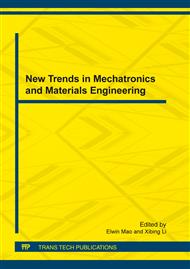p.28
p.32
p.36
p.41
p.47
p.52
p.57
p.61
p.66
Creep Tests Research on a New Zirconium Alloy for Nuclear Fuel Cladding Tubes
Abstract:
Hoop creep tests and axial creep tests were carried out on a new zirconium alloy for nuclear fuel cladding tubes at 375 °C. The result indicated that the proportion of the second creep stage decreased as the stress increasing, meanwhile, the steady-state creep rate increased in both creep test modes. However, the ability of creep rupture resistance in the hoop direction is more strengthen than that in axial direction. The SEM analysis showed that the creep fracture was mainly dimple toughness fracture. The dimple for low stress was intensive and small. The fitting curve by the θ function was well coincided with the test data, so the creep life can be analyzed by θ function.
Info:
Periodical:
Pages:
47-51
Citation:
Online since:
January 2012
Authors:
Keywords:
Price:
Сopyright:
© 2012 Trans Tech Publications Ltd. All Rights Reserved
Share:
Citation:


